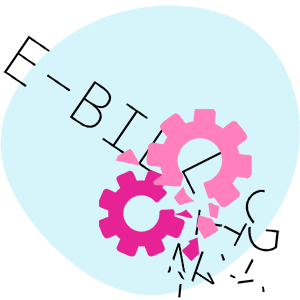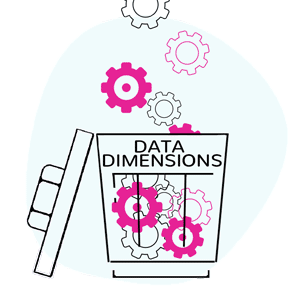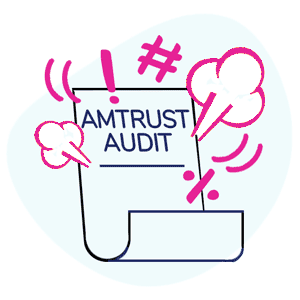How to e-Bill: Improperly Rejected e-Bills Explained

All workers’ comp practices that bill electronically must be aware of a critical issue preventing payment of e-bills: clearinghouses issuing false e-bill rejections.
Some clearinghouses, acting as e-billing agents on behalf of claims administrators, falsely reject compliant e-bills sent by providers. When a clearinghouse falsely rejects an e-bill, the clearinghouse does not forward the rejected e-bill to the claims administrator, therefore, the claims administrator cannot pay the rejected e-bill.
Until the clearinghouse repairs the underlying technical error causing the clearinghouse to falsely reject e-bills, providers cannot resubmit rejected e-bills for payment.
All e-billing practices must carefully monitor rejected e-bills. When the clearinghouse erroneously rejects a compliant e-bill, the provider’s e-billing agent must intervene, as daisyBill does routinely on behalf of our provider clients.
For e-billing practices that do not use daisyBill, it is imperative to be aware of this issue. Your e-billing software must both:
- Report the false rejections to the clearinghouse, and
- Resubmit the erroneously rejected e-bills, once the clearinghouse remediates the error causing the improper rejections
Ultimately, claims administrators are responsible for paying compliant e-bills, including e-bills falsely rejected by its clearinghouse vendor. However, daisyBill’s experience documenting and reporting erroneous e-bill rejections demonstrates that providers bear the burden of holding claims administrators accountable for the failures of their clearinghouses.
Read on to learn why compliant e-bills are wrongfully rejected, what providers’ e-billing agents should do to ensure payment, and what daisyBill is doing to address the larger issue of clearinghouses that consistently, systemically fail to forward compliant e-bills to the claims administrator.
Faulty e-Bill Rejections
Once a provider compliantly submits an e-bill to a claims administrator, California laws and regulations mandate that the claims administrator must respond as follows:
- Within two days of receiving the e-bill, the claims administrator must electronically send the provider a 277 Acknowledgment (277 ACK) indicating whether the e-bill was accepted for processing or rejected due to an error (and will not be processed).
To adhere to the above 277 ACK requirement, claims administrators employ clearinghouses to both receive e-bills from providers, and to send the 277 ACKs accepting or rejecting the e-bills. For more detailed information about the 277 ACK: How to e-Bill: 277 "Receipts" Empower Providers.
Unfortunately, some claims administrators’ designated clearinghouses send providers faulty 277 ACKs that erroneously reject compliant e-bills. Instead of forwarding the compliant e-bill to the claims administrator for processing, the clearinghouse rejects and returns the e-bill to the provider.
daisyBill Intervention
daisyBill closely adheres to California EDI requirements, and sends only 100% compliant e-bills on behalf of our clients. Therefore, there are only two circumstances under which a clearinghouse could plausibly reject any e-bill sent by a daisyBill provider:
- The injured worker’s claim of injury is denied, or
- There is no coverage by the claims administrator.
When a clearinghouse falsely rejects an e-bill submitted by a client, daisyBill undertakes the following steps to resubmit the falsely rejected e-bill for payment:
- Designates the e-bill with a DaisyBill Researching status,
- Contacts the claims administrator’s clearinghouse to report the false e-bill rejection,
- Once the clearinghouse reports fixing the error, daisyBill resubmits the rejected e-bill on behalf of our client,
- Monitors the e-bill until it is ultimately accepted by the clearinghouse and sent to the claims administrator for processing,
- Appends a Non-Compliance Alert to each e-bill history affected by the EDI error.
When an e-bill rejection is erroneous, the clearinghouse (not the provider) is at fault for failing to timely transmit the compliant e-bill to the claims administrator. Given the strict timely filing deadlines for California providers for bills and Second Review appeals, it is important that a provider’s e-billing software documents the instances when a clearinghouse erroneously rejects an e-bill.
False 277 Rejections: ‘Claim Not On File’
Some claims administrators’ clearinghouses incorrectly reject valid, compliant e-bills systematically with the following rejection reason: CLAIM NOT ON FILE / NOT FOUND.
For e-billing purposes, a claims administrator sends its designated clearinghouse a list of all injury claim numbers managed by the claims administrator. The list of claims numbers sent to a clearinghouse is called a ‘claims feed.’
The claims administrator (or its bill review) is responsible for updating its ‘claims feed’ with all new and existing injury claim information. Using the information provided in the ‘claims feed’, the clearinghouse is responsible for correctly sending providers 277 Acknowledgements. Using this claims feed from the claims administrator, the clearinghouse either:
- Rejects a provider’s e-bill if the claims administrator’s claims feed does not include the injury claim number listed on the e-bill. The clearinghouse does not send the rejected e-bill to the claims administrator, therefore, the claims administrator cannot pay the rejected e-bill.
- Accepts the provider’s e-bill If the injury claim number is included in the claims feed the claims administrator sent to its designated clearinghouse. For accepted e-bills, the clearinghouse forwards the e-bill to the claims administrator for processing.
Unfortunately for providers choosing to e-bill, claims administrators and clearinghouses often fail to properly manage the claims feeds, which results in clearinghouses improperly rejecting providers’ compliant e-bills.
On behalf of our clients, when daisyBill demands an explanation for the incorrectly rejected e-bills, either the clearinghouse blames an inaccurate claims feed sent by the claims administrator or the claims administrator’s the bill review vendor.
This circular blame-game is as pointless as it is unhelpful; the claims administrator is ultimately responsible for compliance, even if the clearinghouse is at fault. Per the California Division of Workers’ Compensation (DWC) Electronic Medical Billing and Payment Companion Guide:
Billing agents, electronic billing agents, third party administrators, bill review companies, software vendors, data collection agents, and clearinghouses are examples of companies that may have a role in electronic billing. Entities or persons using agents are responsible for the acts or omissions of those agents executed in the performance of services for the entity or person. [emphasis added]
daisyBill is left with few options except to report the claims administrator to the DWC by submitting Audit Complaints. As an example, this article details the thousands of audit complaints submitted due to Berkshire Hathaway’s designated clearinghouse incorrectly rejecting thousands of e-bills submitted by providers.
Erroneous 277 ACK rejections break down and undermine workers’ comp e-billing.
Through no fault of providers, perfectly valid e-bills go unpaid due to clearinghouse failures. Providers must be ready to navigate improper e-bill rejections, and California regulators must be ready to impose consequences on claims administrators for failure to keep their (clearing)houses in order.
daisyBill fights the good fight on behalf of workers’ comp providers. Reach out to see how we can help your practice obtain fast, correct reimbursement for treating injured workers.
LET’S TALK
DaisyBill provides content as an insightful service to its readers and clients. It does not offer legal advice and cannot guarantee the accuracy or suitability of its content for a particular purpose.







.png)
.gif)